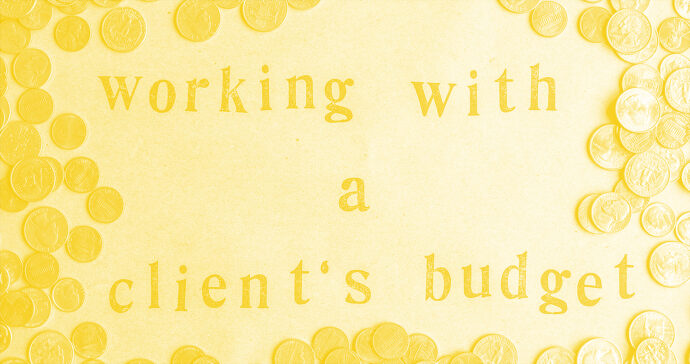Editor’s note: Working with a prospective client doesn’t just begin and end with discussing your price. To understand your numbers, you also need look at how a budget is divided into negotiable and non-negotiable item as those affect your price as well. Craig Ferguson walks you through what matters.
The phone rings or an email arrives in your inbox, and you’ve got a potential client wanting to commission you to shoot something. It could be a library of images, a hero shot, drop-and-pop product shots, or headshots of a board of directors.
Whatever it is, you have an assignment, you have a budget to work with, and you’re ready to go.
Wait. Budget? You mean I don’t just turn up with a camera, snap a few frames, and get paid? I’ve got to do it at a certain price?
Good photography requires good planning and production. And production costs money. When you have a set budget from a client, production costs must fall within that budget without forgetting your own fees as the photographer.
To understand your numbers, let’s look at how a budget is divided into negotiables and non-negotiables.
Non-negotiables
These are the expenses incurred that you owe other vendors. Do you need modeling talent for the shoot? Do you need a food stylist? Specific rental equipment? Location fees or permits to pay? Food and drinks for everyone on set?
All of these things cost money; most of them are going to be fairly fixed. Equipment rental, permit fees, makeup artists, etc. usually have set fees that don’t change.
Of course, you’ll already know this because you’ve included them in your initial bid or quotation. If the job runs over budget, and the client can’t or won’t go higher, you still have to pay for these expenses.
Negotiables
The first item that’s on your bid and in your calculations is your creative fee or “day rate”. This is the fee that reflects your cost of doing business. If you can’t cover this, not only are you failing to make a profit, but you’re also effectively paying out of your own pocket to do the shoot and therefore losing money.
If the job requires one day of preparation, one day of shooting, and one day for post-production, then your creative fee needs to reflect that you’re actually spending three days on the job.
If your creative fee is set higher than your cost of doing business, then you may have some room to negotiate; if not, you must establish a minimum number you can’t go below. It’s a number you need to know, and it will be different for every photographer.
Next comes usage, the licensing fee for the required use of the photography. A worldwide ad campaign will be priced much differently than a website header image for a local plumber, even if it’s the same photo.
Usage is the most easily confused part of the bid.
Let’s say you’ve responded to the client with a bid, and it’s higher than their budget. Usage may be the only place where there’s a bit of room to negotiate, unless you’re working with an ad agency or someone else who contracts photographers.
Usage is the most easily confused part of the bid. Most people tasked with hiring a photographer don’t actually know much about different types of usage. When they say, “We want copyright to use the photos any way we want,” they’re most likely not speaking of a buyout but instead mean that they want to use the photos on Facebook and in other promotional platforms.
90% of businesses in the US are small businesses, and most of them serve a relatively small geographic area. Sure, their website can be seen globally, but pricing for usage should reflect the limited scale of their actual business area.
This gives you the most room to adjust your pricing to bring it in line with the client’s budget. They don’t need to pay for a full buyout when what they really need is a year’s worth of citywide usage.
Takeaway
Some things on a job are, for me, non-negotiable. If a budget can’t meet my fixed expenses (CODB, plus anything or anyone I need to hire for the shoot), then I’ll offer a polite “thanks, but no thanks” to the job. Beyond that, there’s always room for negotiation.
If you cannot come to an agreement, you can walk away knowing that you asserted your worth.
I remember a recent interior job shoot for a design company in another city. They came to me with their requirements, and I provided a quote. They returned with some points regarding usage and payment terms on which I couldn’t agree.
These points appeared to be red flags and tempted me to walk away from the job; however, I decided to wait a day and replied with my concerns.
As it turned out, they were new to directly commissioning a photographer and didn’t completely understand protocol, so those red flags were resolved and became non-issues. We came to an arrangement for a deposit that covered the fixed costs with the balance to be paid upon delivery and better clarified the usage terms.
Again, it’s important to know your numbers and to clarify when it appears that your client may not understand the process. If, as in the above example, you can educate your client and come to an agreement, it’s a win-win.
If you cannot come to an agreement, you can walk away knowing that you asserted your worth and that you will not have ended up spending money on a project for which you should be paid.
This Is Only The Beginning
While you’re perfecting your pricing, don’t forget to learn from others in the industry, grow your business with focus, and avoid losing customers with a rookie mistake!



